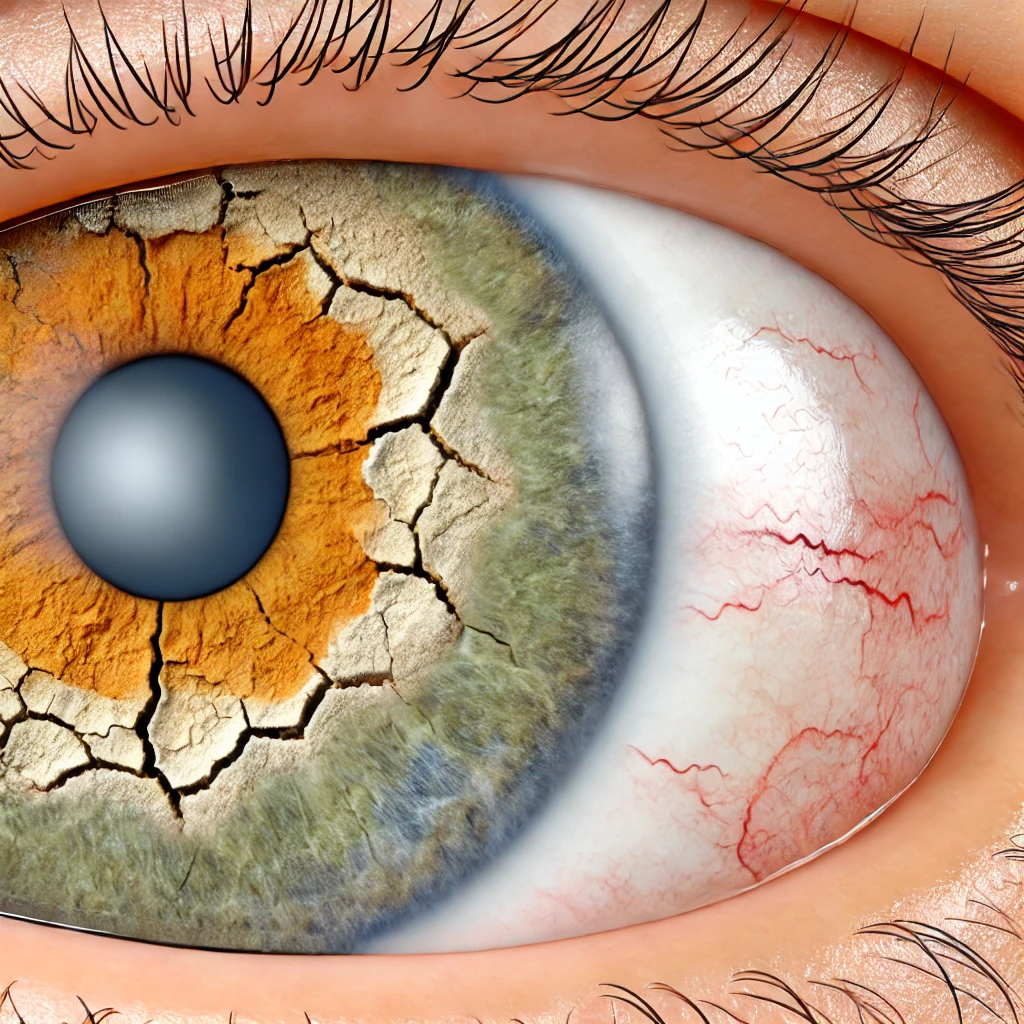What is Dry Eye Disease?
Dry Eye Disease (DED) is a common condition that occurs when your tears aren’t able to provide adequate lubrication for your eyes. Tears can be insufficient for many reasons, including inadequate production and rapid evaporation. Dry Eye Awareness Month, observed in July, aims to educate and inform the public about this prevalent issue that affects millions worldwide.
Symptoms of Dry Eye Disease
Dry eye disease can cause a range of uncomfortable symptoms, including:
- Stinging or burning sensation: A common and irritating symptom.
- Redness: The whites of your eyes may appear red and inflamed.
- Sensitivity to light: Bright lights can become bothersome.
- Blurry vision: Periodic blurriness that may clear with blinking.
- A feeling of having something in your eyes: Often described as feeling like there’s grit or sand in the eyes.
- Difficulty wearing contact lenses: Dryness can make wearing contact lenses uncomfortable.
- Watery eyes: Paradoxically, dry eye can lead to an excess of watery tears as a reflex response.
Causes of Dry Eye Disease
Dry eye disease can be caused by various factors, including:
- Age: Tear production tends to diminish as you get older.
- Gender: Women are more likely to develop dry eyes due to hormonal changes during pregnancy, the use of contraceptive pills, and menopause.
- Medical conditions: Conditions such as diabetes, rheumatoid arthritis, and thyroid disorders can contribute to dry eyes.
- Medications: Some medications, including antihistamines, decongestants, blood pressure medications, and antidepressants, can reduce tear production.
- Environmental factors: Exposure to smoke, wind, and dry climates can increase tear evaporation.
- Screen use: Staring at a computer or mobile screen for extended periods can reduce blink rate, leading to dry eyes.
Diagnosis and Treatment
If you experience symptoms of dry eye, it is important to see an eye care professional for a comprehensive eye exam. Various tests can be performed to determine the quantity and quality of your tears.
Treatment Options:
- Artificial Tears: Over-the-counter eye drops can provide temporary relief for mild cases.
- Prescription Medications: Drugs such as cyclosporine or lifitegrast can help increase tear production.
- Punctal Plugs: Tiny plugs can be inserted into tear ducts to reduce tear drainage.
- Meibomian Gland Expression: Procedures to unclog blocked oil glands can improve tear quality.
- Lifestyle Changes: Adjusting your environment, increasing humidity, taking breaks from screens, and wearing wraparound sunglasses can help manage symptoms.
Preventing Dry Eye Disease
While some risk factors for dry eye disease, like aging, cannot be avoided, there are steps you can take to reduce your risk:
- Stay Hydrated: Drink plenty of water to help maintain a healthy tear film.
- Blink Regularly: Make a conscious effort to blink more frequently, especially when using digital screens.
- Adjust Your Environment: Use a humidifier to add moisture to the air, and avoid smoke or other irritants.
- Take Screen Breaks: Follow the 20-20-20 rule: every 20 minutes, look at something 20 feet away for at least 20 seconds.
- Use Protective Eyewear: Sunglasses can protect your eyes from wind and UV light, which can contribute to dry eyes.
Conclusion
Dry Eye Awareness Month is an excellent opportunity to learn about dry eye disease and how to manage it. At Westlake Eye Specialists, we are committed to providing comprehensive care to help you maintain healthy eyes and clear vision. If you experience symptoms of dry eye, don’t hesitate to schedule an appointment with us.
For more information or to book a consultation, visit Westlake Eye Specialists or call us at (512) 347-0255. Take the first step towards relief and healthier eyes today!


